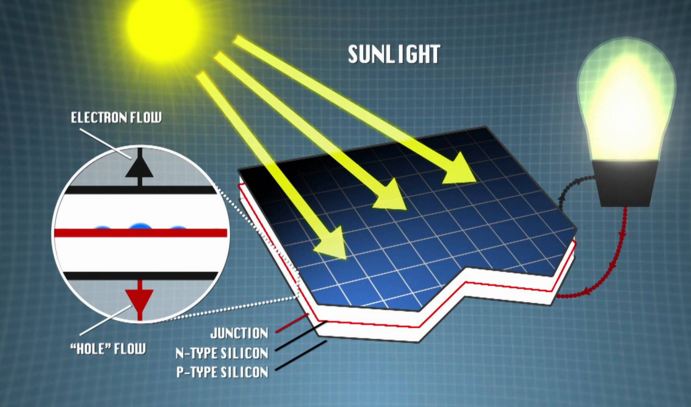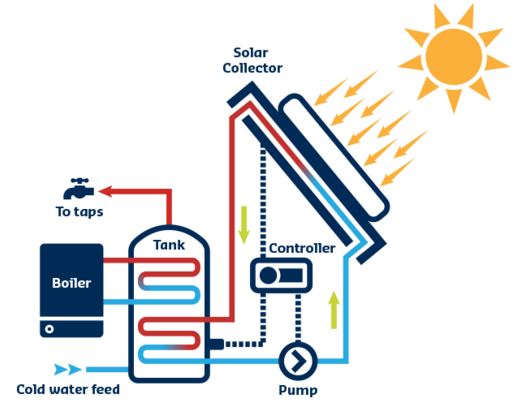Solar energy: applications of solar energy
What is solar energy?
“Solar energy is the energy coming from the sun and is used directly and indirectly.”The earth receives a huge amount of energy directly from the sun each day. Solar energy at normal incidence outside the earth’s atmosphere is about 1.4 km-2 which is referred to as solar constant. While passing through the atmosphere, the total energy is reduced due to reflection, scattering, and absorption by dust particles, water vapors, and other gases. On a clear day at noon, the intensity of the solar energy reaching the earth’s surface is about 1Kwm-2. This energy can be used directly to heat water using large solar reflectors and thermal absorbers or be converted to electricity. In one method the flat plate collectors are used for heating water. Some methods and devices through which we produce electricity and heat using sunlight are given below:
Solar cells
The semiconductor devices through which sunlight is directly converted into electricity are called solar cells or photovoltaic cells. Solar cells are thin wafers made from silicon.

Electrons in the silicon gain energy from the sunlight to create a voltage. The voltage produced by a single voltaic cell is very low. In order to get sufficient high voltage for practical use,a large number of such cells are connected in series forming a solar panel. For cloudy days or nights, electric energy can be stored during the sunlight in the Nickel-cadmium batteries by connected them to solar panels. These batteries can then provide power to electrical appliances at nights or on cloudy days.
Solar cells, although, are expensive but last a long time and have low running costs. Solar cells are used to power satellites having large solar panels which are kept facing the sun. Other examples of the use of solar cells are remote ground-based weather stations and rain forest communication systems. Solar calculators and watches are also in use nowadays.
Solar house heating
The use of solar energy is not new. However, its use in houses and offices as well as for commercial industrial purposes is quite recent. A complete solar house heating system is successfully used in areas with a minimum amount of sunshine in winter. A heating system consists of:
- A collector
- A storage device
- A distribution system
A solar collector made of glass panels over blank metal plates. The plates absorb the sun’s energy which heats a liquid flowing in the pipes at the back of the collector. The hot water can be used for cooking, washing, and heating the buildings.
Related Topics: